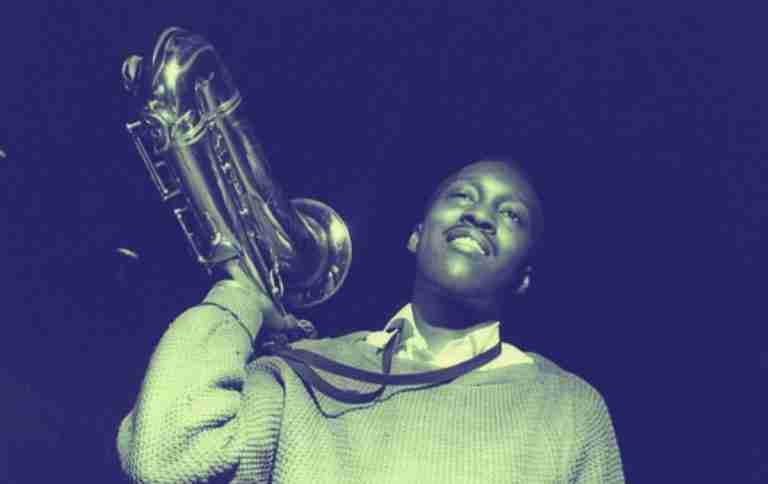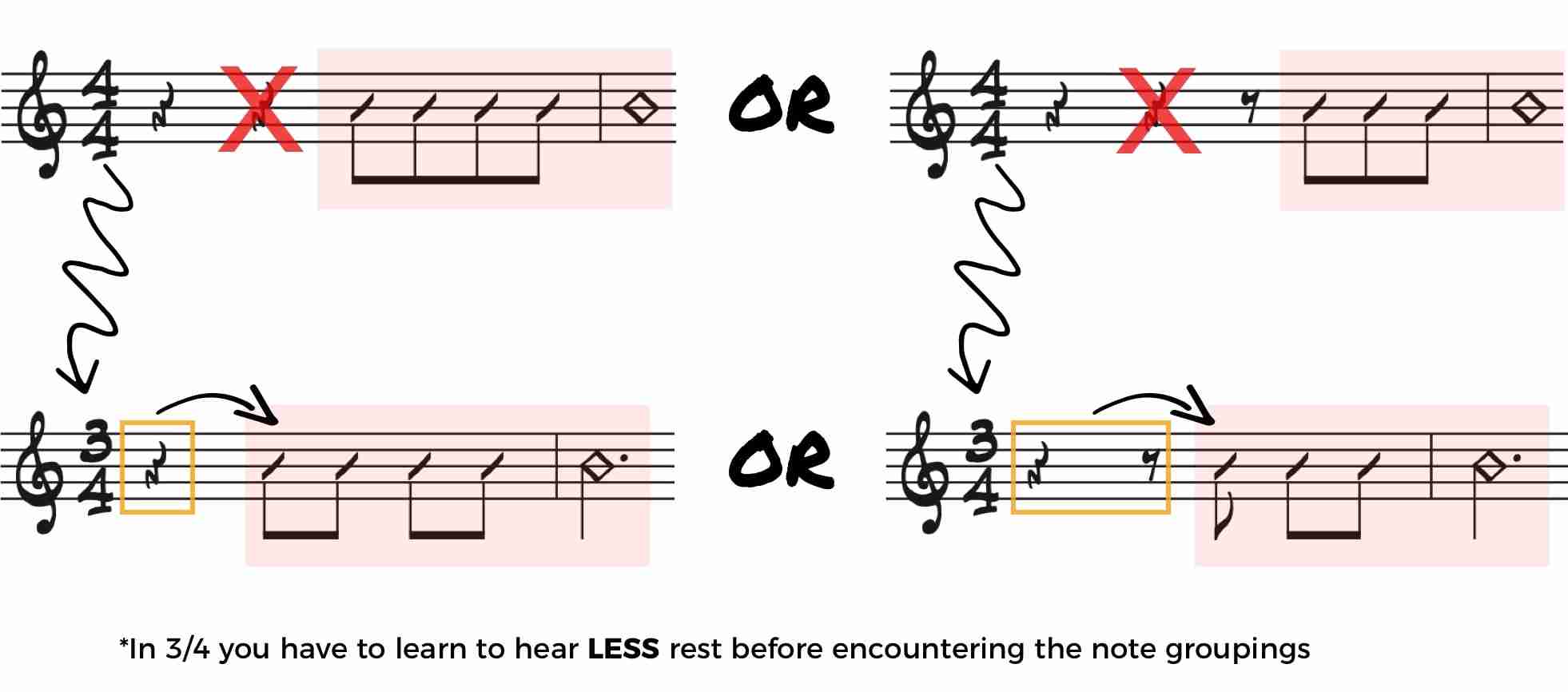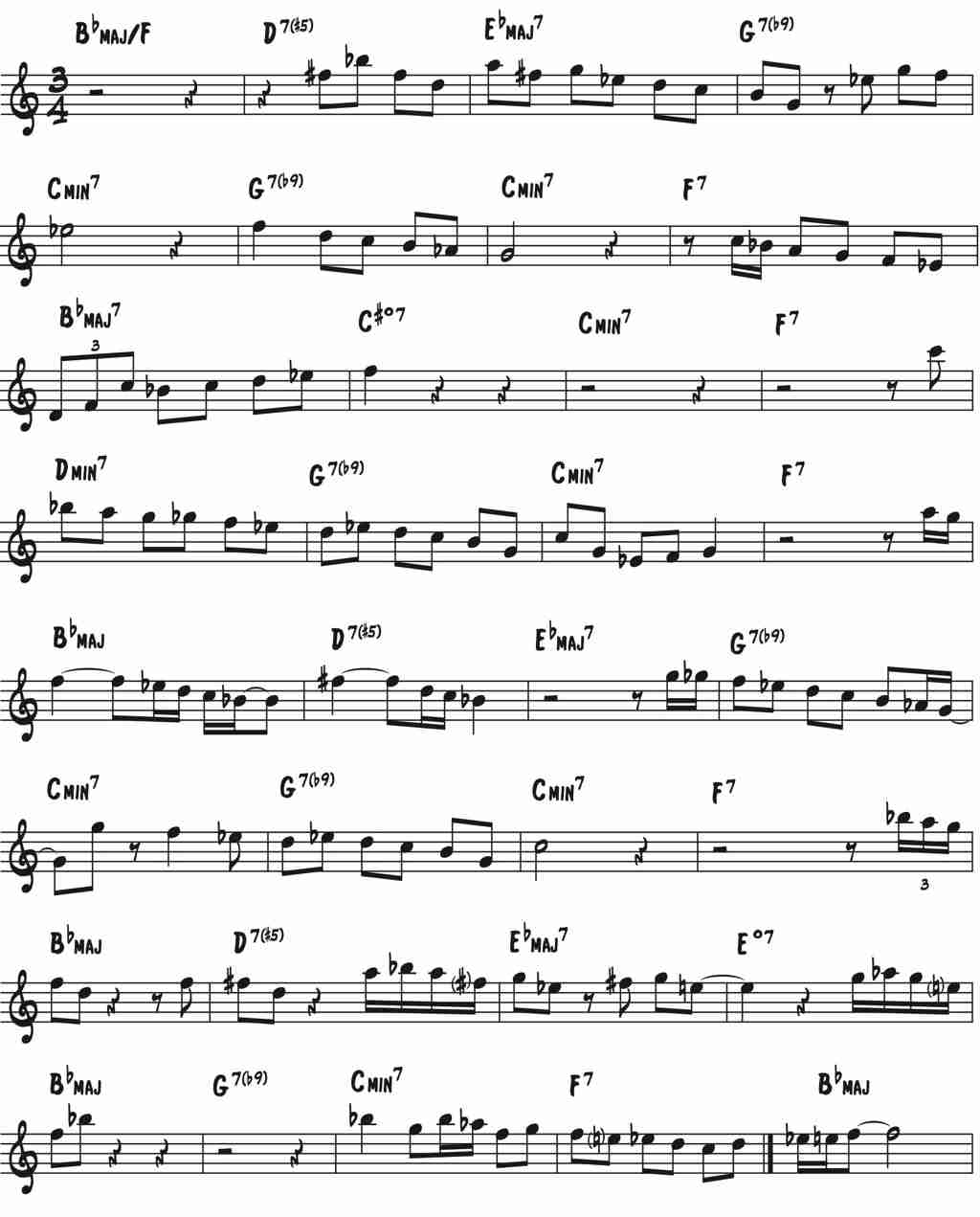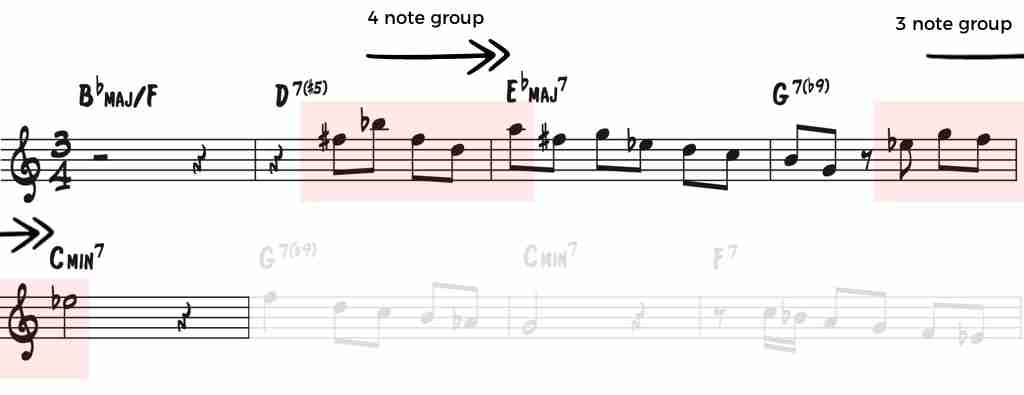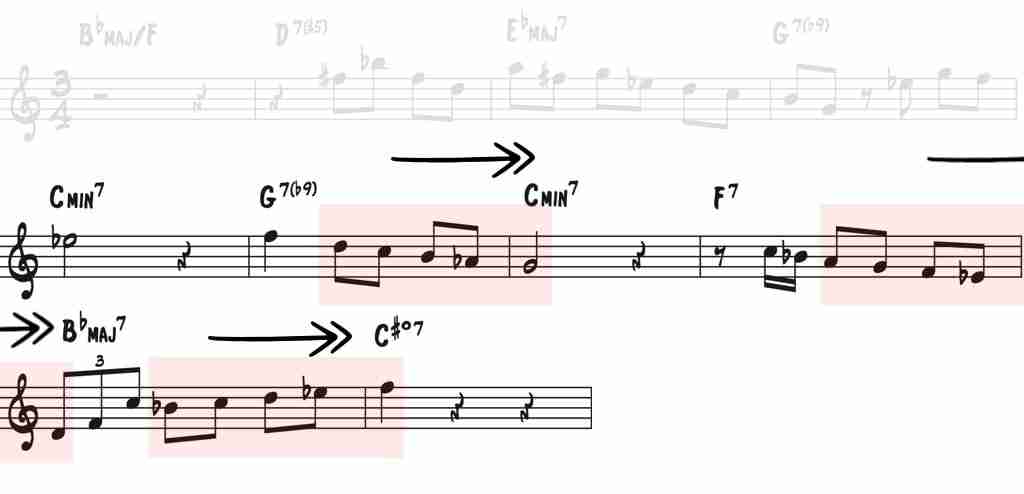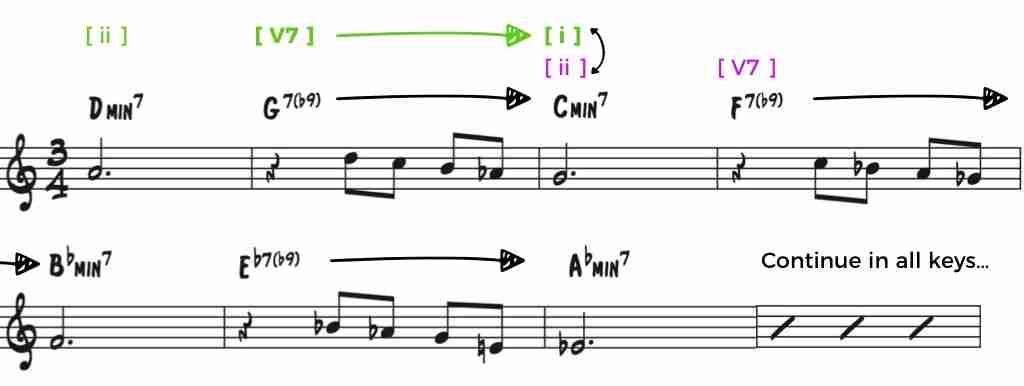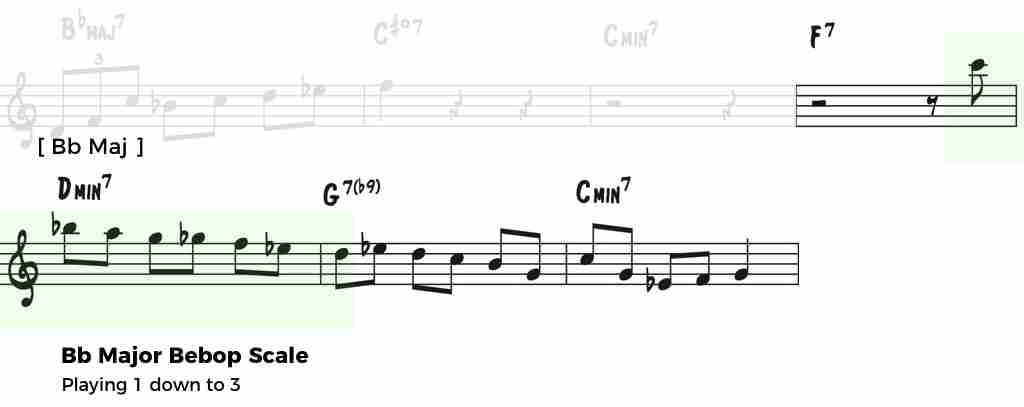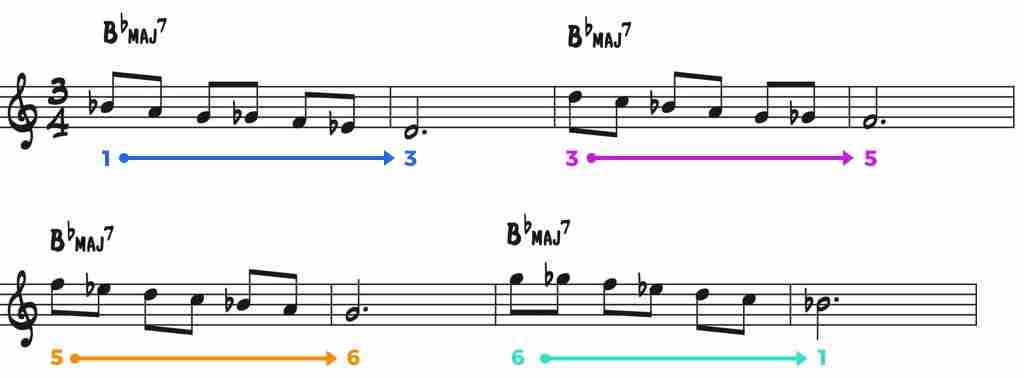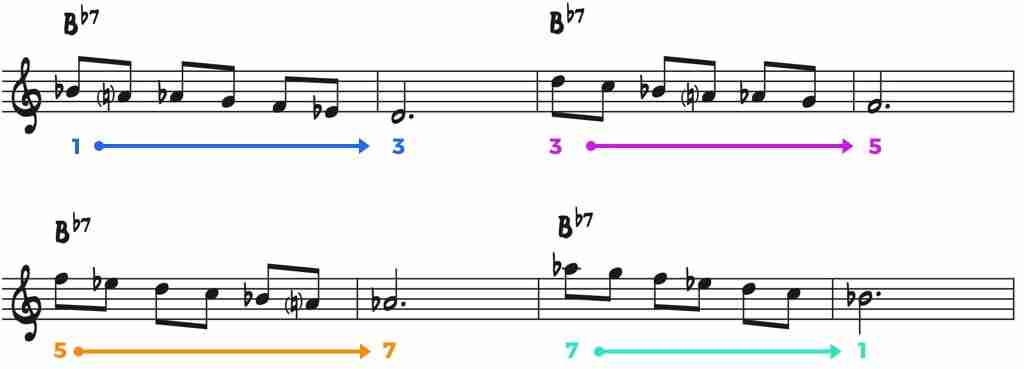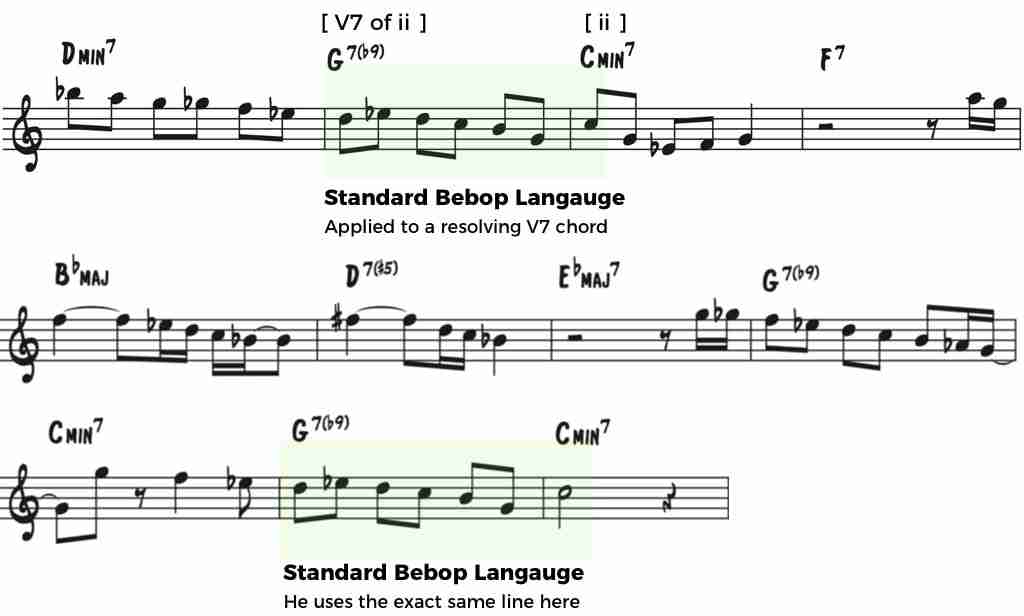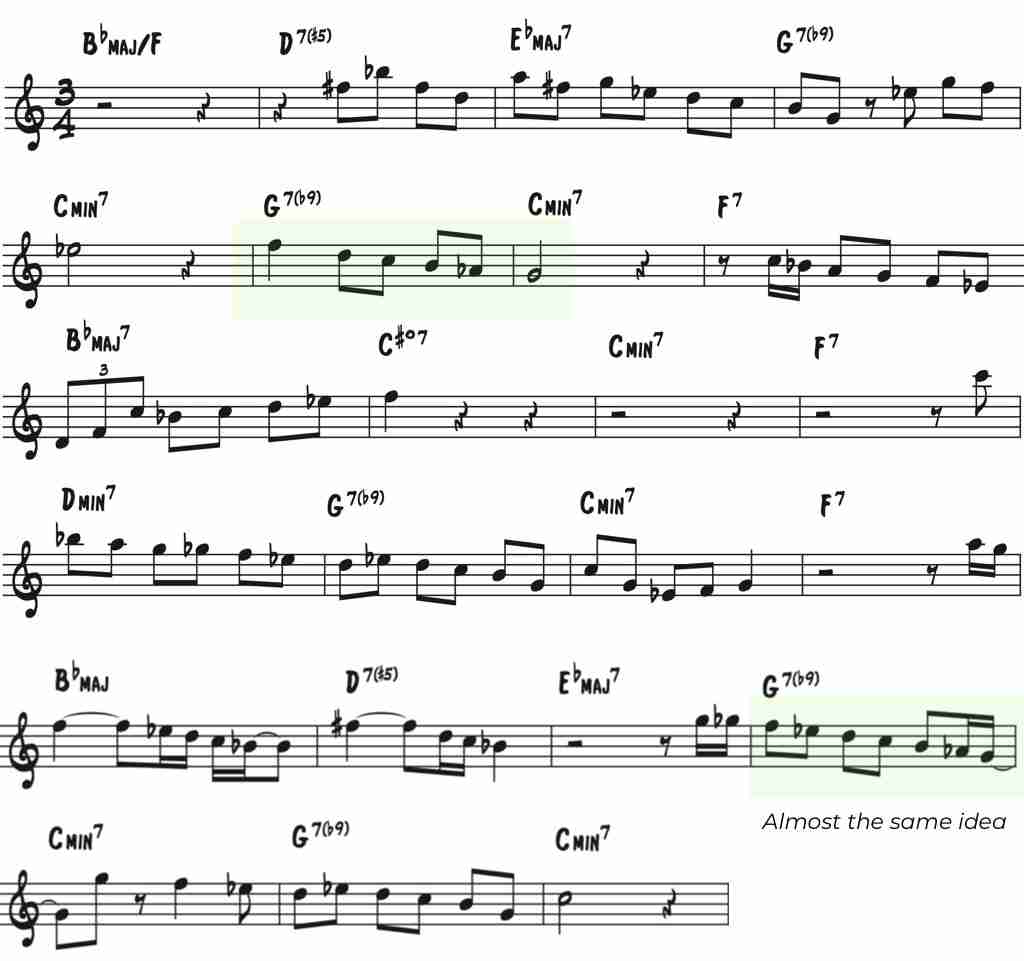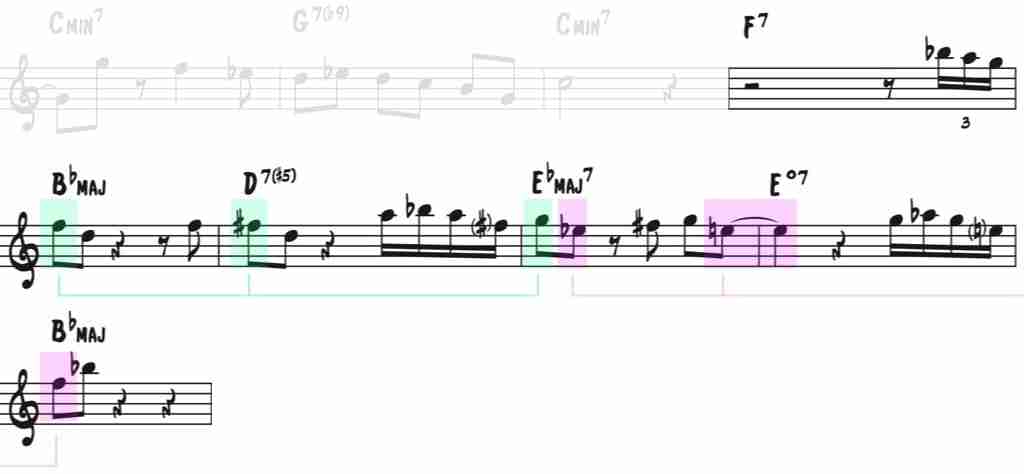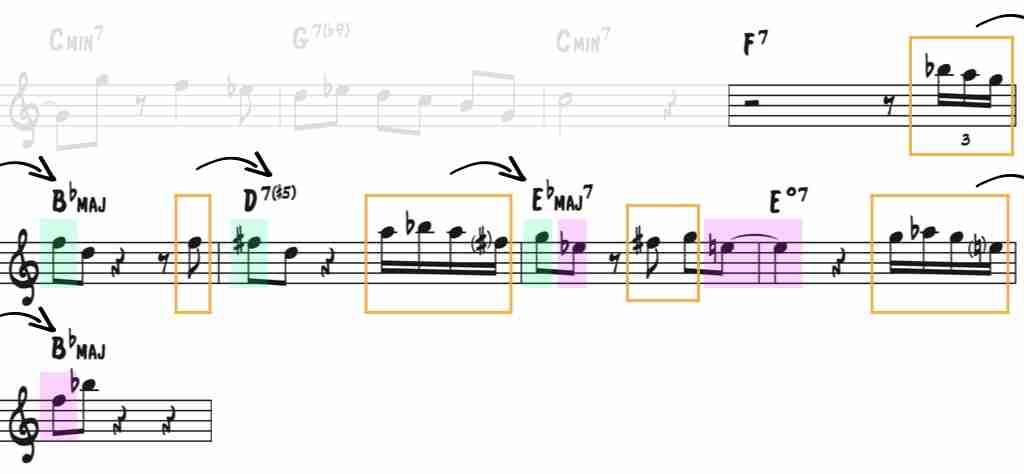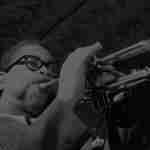Of all the time signatures that we encounter in jazz or any other music, the most common by far is 4/4, meaning it has 4 beats per measure and a quarter note is equal to each beat. In fact, 4/4 is so common that it’s actually called “common time” and has its own symbol in the shape of a “C” that frequently replaces the 4/4 at the beginning of a chart.
But not all jazz is in common time – many great jazz tunes are set in 3/4 with 3 beats per measure instead of 4, giving them a unique character that can be tricky to master…
Jazz standards like Up Jumped Spring, Bluesette, Black Narcissus, Emily, and Someday My Prince Will Come…
Casually referred to as “Playing in three,” all jazz musicians need to learn how to easily think, hear, and solo in this time signature, which can be quite the task because playing in three doesn’t come naturally.
It’s an entirely new environment you have to get comfortable with and It’s something that you have to work through slowly and improve at gradually over time.
Today we’ll get you started on your journey of playing 3/4, so you can add this tricky meter to your playing arsenal.
By the time we’re done, you’ll have tons of practice exercises and concepts to work on that will help you learn to improvise lines and express yourself musically in this new playing situation.
And to achieve this, we’ll turn to one of the best classic tenor saxophonists, the great Hank Mobley.
Hank Mobley – Someday My Prince Will Come
On the track Someday My Prince Will Come from the Miles Davis album of the same name, he recorded the beautiful 3/4 composition that actually originated from Walt Disney’s 1937 animated movie Snow White and the Seven Dwarfs.
Have a listen to the Miles version of Someday My Prince Will Come, and pay particular attention to the first saxophone solo, Hank Mobley.
Hank navigates 3/4 like a pro! His lines effortlessly weave through the chord changes even though he’s playing in three.
For him, 3/4 is just as easy as 4/4, which is the goal we’re after…we want to become so accustom to playing in three, that it’s nothing out of the ordinary.
And by studying Hank’s solo and breaking down the specific techniques he’s using, you’ll quickly get there because, as you’ll soon realize, it contains all the secrets to help you gain fluidity in 3/4.
But first things first – if you want to play in three, then you first need to learn to hear in three because how you hear, is how you play…
Learning to hear 3/4 time
The first step to playing in 3/4 is learning to hear in 3/4, but even before that we need to understand how we hear in 4/4…
You see, the way we hear is not as straightforward as most people think…
We don’t just hear static music contained within the confines of a set of bar lines. We actually hear music pushing through bar lines, constantly moving forward toward beat 1 of the following measure.
While we may not always improvise through bar lines, it’s natural to hear, sing, and phrase toward beat 1, and this is critical to understand because it’s exactly what trips us up when we move into 3/4.
To learn to hear in 3/4, just like you do in 4/4, you need to learn how to hear the music moving forward toward beat 1 of the next measure.
Music is not static, it’s always moving forward – it’s progressing.
And some of the most common ways we hear jazz lines moving forward involve two common note groupings:
- A Four note group – This starts on beat 3 and moves to beat 1
- A Three note group – This starts on the And of beat 3 and moves to beat 1
These note groupings are at the heart of how we hear, so to learn to hear in 3/4, you must first learn to hear how these note groupings sound in three, as opposed to four.
In three, the important thing to remember is that you have one less quarter note, or two less eighth notes, than you do in 4/4 time, so you move more quickly through the bar, hence you reach beat 1 of the following bar sooner.
So, if we adapt the note groupings to 3/4, you can see this in action…
In 3/4…
- The Four note group – Starts on beat 2 (instead of beat 3)
- The Three note group – Starts on the And of beat 2 (instead of the and of beat 3)
Ok, so now that you have an idea about how to spot these note groupings and how they live in the context of 3/4, let’s take a look at how these come up in Hank’s playing.
First, have a listen to Hank Mobley’s first chorus on Someday My Prince Will Come to get an idea of what will be using as a model throughout this lesson.
Can you hear how easily he plays in three? How it doesn’t trip him up at all and how his bebop lines seem to live perfectly in this environment?
And did you notice how he’s using the two note groupings we talked about?
Take a look at this line and you’ll quickly understand how Hank makes use of both note groupings in nearly every line he plays.
Because he can hear these groups moving forward to beat one of the next measure, his lines continually contain a great deal of forward momentum.
And much of the time, he’s not resting before the note groupings but playing material that leads into them like this…
These two note groupings are absolutely vital to learning to hear in 3/4. Here are two exercises inspired by Hank that you can practice which will help you get started…
Exercise #1 – Four Note Grouping in 3/4
You’re going to play ii Vs down in whole steps and really focus on the V7 resolving to the next ii V – this is actually V7 moving to i, and the minor i then becomes the ii of the next ii V.
Now, what I want you to do is play the simple Hank line of 543b9 on the dominant chord resolving to the 5th of the minor chord – understand how you’re starting the four note group on beat 2 and playing through to beat 1 of the next measure.
Really pay attention to how you’re moving through the bar lines and what it feels like to begin your line on beat 2 and resolve to beat 1 of the next measure in the context of 3/4.
It will feel, and sound, totally different than 4/4, which is why this exercise is so crucial.
Exercise #2 – Three Note Grouping in 3/4
Once you’ve got a handle on that, next you’ll do the same thing, but remove the first eighth note, so the four note grouping will transform into a three note group.
Just like the last exercise, play this in all keys by moving the ii Vs down in whole steps, which gets you to half of the keys, then do the same exercise up a half step to hit the other 6.
Using Bebop Scales in Three
Once you can hear in 3/4 and have played through the exercises helping you to adapt to the new time signature, the next step is to transfer some of your current bebop tools from 4/4 to 3/4.
And a great place to start to do this is with the bebop scale.
The bebop scale is a super flexible and easy to use tool, which is why you can find pieces of the bebop scale in nearly every jazz legend’s playing
But how does this scale convert to 3/4?
The goal of a bebop scale is to keep the chord-tones on strong downbeats (1-2-3-4), and it works very much the same way in 3/4, keeping the chord-tones on the strong downbeats of 1-2-3.
Take a listen to this line from Hank Mobley’s solo where he plays the bebop major scale…
Technically, he’s playing over a D minor chord but because it’s functioning as a iii chord, he treats it like a One Major chord and simply plays the Bb major bebop scale.
And just like in 4/4, the bebop major scale helps move the line forward and keeps the essential chord-tones on strong downbeats.
A great way to practice this scale and get used to playing it in 3/4 is by practicing it down from the root, 3rd, 5th, and 6th for each key.
Check it out…
Exercise #1 – Bebop Major Scales in 3/4
Start by descending from the root to the 3rd, then the 3rd to the 5th, then the 5th to the 6th, and finally the 6th to the root.
Play through these four pieces of the bebop scale in one key, and then go to another until you’ve gone through all 12 major keys.
Exercise #2 – Bebop Dominant Scales in 3/4
You can also apply the same thinking to the bebop dominant scale to learn how to use this scale in 3/4 as well. In the very last line of Hank’s chorus, he actually uses a piece of this scale:
With the bebop dominant scale, practice it down from the root, 3rd, 5th, and 7th like this:
Try one day during your practice session to go through all 12 of your bebop major scales in 3/4 from each chord-tone as shown in Exercise #1.
Then the following day, do all of your bebop dominants as illustrated in Exercise #2.
You can continue to alternate each day which ones you practice and in a few weeks, you’ll have quite a bit of facility with your bebop scales in 3/4.
Transferring Bebop Language to 3/4
Besides the bebop scale, it’s also a great idea to take some of your favorite bebop language over to 3/4 as well.
The more comfortable you are using your favorite lines and ideas in three, the easier it will be to use this information when you’re playing a tune in this time signature.
Hank Mobley clearly took his favorite lines and practiced them in three. Here’s an excerpt where he repeats the exact same piece of standard bebop language over a V7 resolution.
And this is not a coincidence that he plays this piece of language twice over a resolving dominant chord – he clearly practiced his most-used bebop language in specific places so that the information would naturally come out when he soloed.
In fact, here’s another excerpt where he repeats another piece of language, not verbatim this time, but very close…
Taking a piece of language from a solo you’re working on or one of your favorite lines and practicing it in three is a great exercise to get accustom to using that language in this different time signature.
Once you’re comfortable using a line in a particular context, you’ll naturally improvise with the line and use it as a jumping-off point for your creativity
Here are a couple exercises to get you going on bringing your bebop language over to 3/4.
Exercise #1 – Bebop Dominant Language in 3/4
Going back to our ii Vs descending in whole steps, practice taking a piece of resolving dominant language like Hank used and play over the V7 to I part of the progressions like this…
Take it through all keys. Remember that ii Vs down in whole steps only hits half of the keys. You then need to practice the exercise up a half step to hit the other six.
Exercise #2- Bebop Minor Language in 3/4
Next, go back to the Hank solo or a solo that you’ve been working on and select a different piece of language that you like to practice in 3/4.
You can take anything that appeals to you! Perhaps you select this minor piece:
Simply practice this piece of minor language around the Cycle in 3/4 like this…
If you want to master playing in three, you’ll give yourself a huge advantage if you practice jazz language in three.
And, after a while, you’ll be able to freely improvise using your language in 3/4 without even thinking.
Driving toward Beat 1 with Pickups
While the note groupings we talked about earlier are a type of pickup, moving to beat 1 when you’re playing in 3/4 time is so essential that it’s worth emphasizing it even more in your practice – you really want to get used to pushing through the bar line and driving toward beat 1.
And a great tactic to always be moving toward beat 1 that Hank Mobley loves to utilize is to sprinkle a healthy dose of pickups throughout your solo.
For example, In this line, the underlying motion is made up of two ascending chromatic pieces: F-F#-G & Eb-E-F
But listen to how he embellishes it by inserting various pickup notes leading into each note of the underlying chromatic line to give a sense of forward motion and movement.
Learning to insert pickups like this in your lines is crucial for 3/4. Here’s a couple of exercises that will help you get comfortable using pickup notes in three…
Exercise #1 – 8th note pickups in 3/4
For this exercise, you can use any progression you like. We’ll make it simple and use major chords moving around the Cycle and we’ll play a half step pickup into the 3rd of the chord like Hank does in his line.
Take this around the Cycle until you’ve played it in all 12 keys. Make sure to use a metronome and keep track of where you’re at.
Exercise #2 – 16th note pickups in 3/4
Next, in this exercise you’ll play a group of 16th notes as pickups into beat 1, and head for the 5th of each chord, much like Hank does in his line as well.
Both of these exercises will get you playing pickups in 3/4 and help you learn to hear into beat 1, which is so essential to this time signature.
Learning to improvise and play jazz in 3/4 time
Playing in three does not have to be difficult, but most of us have spent are musical lives solely in 4/4. It’s time to expand your metric comfort and master 3/4 once and for all!
Make sure from today’s lesson that you can now:
- Hear in 3/4 and understand how note-groupings work
- Can take the bebop major & bebop dominant scales into 3/4
- Understand how to transfer your bebop language into three
- Have a grasp on why pickups are so important in three and know how to insert them into your lines
Listen to Hank Mobley’s solo again and again, as well as the other solos on Someday My Prince Will Come.
This tune is quintessential 3/4 playing!
All the answers you want to know are on there. Explore what Miles is doing and Trane, all the while, keeping the concepts we talked about today in mind because you will encounter them over and over.
Learning to play in 3/4 has more to do with your ear and comfort level in the new time signature than anything else.
By really practicing and internalizing the exercises we detailed for you today, you’ll acquire the necessary practice in this new environment to gain the confidence you need to solo like a pro in 3/4!
